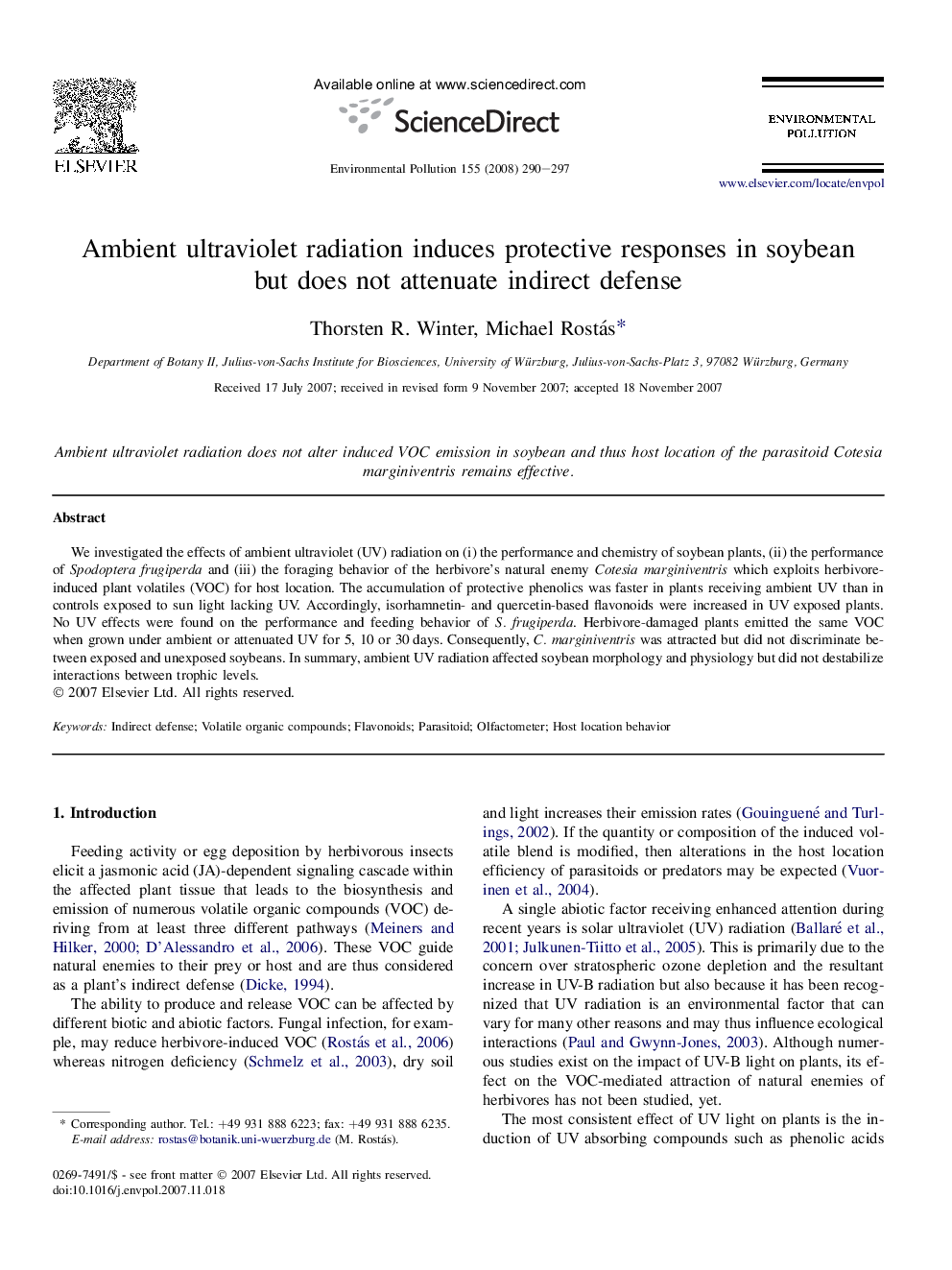| Article ID | Journal | Published Year | Pages | File Type |
|---|---|---|---|---|
| 4426491 | Environmental Pollution | 2008 | 8 Pages |
We investigated the effects of ambient ultraviolet (UV) radiation on (i) the performance and chemistry of soybean plants, (ii) the performance of Spodoptera frugiperda and (iii) the foraging behavior of the herbivore's natural enemy Cotesia marginiventris which exploits herbivore-induced plant volatiles (VOC) for host location. The accumulation of protective phenolics was faster in plants receiving ambient UV than in controls exposed to sun light lacking UV. Accordingly, isorhamnetin- and quercetin-based flavonoids were increased in UV exposed plants. No UV effects were found on the performance and feeding behavior of S. frugiperda. Herbivore-damaged plants emitted the same VOC when grown under ambient or attenuated UV for 5, 10 or 30 days. Consequently, C. marginiventris was attracted but did not discriminate between exposed and unexposed soybeans. In summary, ambient UV radiation affected soybean morphology and physiology but did not destabilize interactions between trophic levels.
